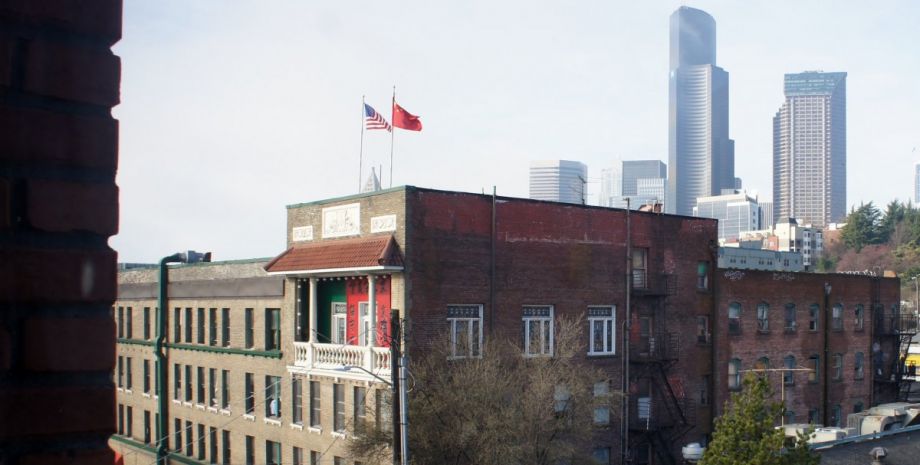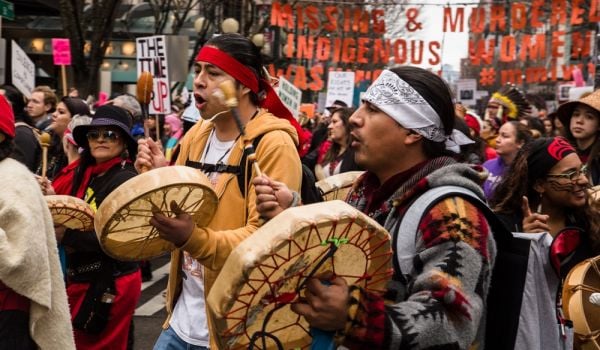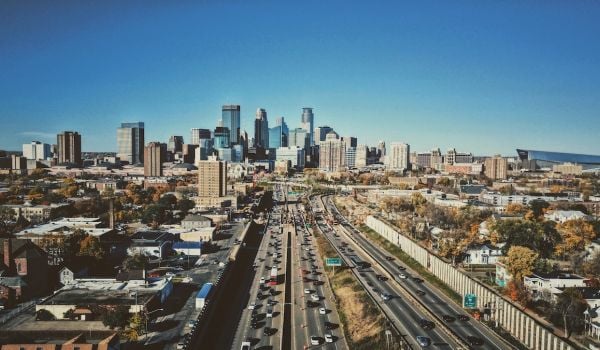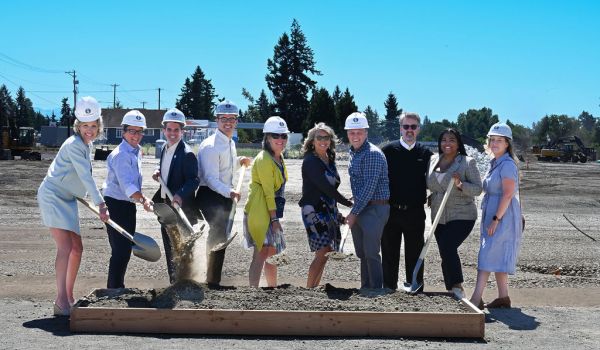The lack of investment in many Black, indigenous and other communities of color is easy to measure, easy to see manifested in the built environment. Homes and commercial corridors boarded up, falling apart or bulldozed into empty lots. But those are just the most visible manifestations of disenfranchisement — the stripping of power, whether its voting rights or capital and investment decisions.
In Seattle, last month, communities that have been stripped of that power wrested some of it back, in the chartering of the new Cultural Space Agency, a city-sponsored public development authority created to develop and steward permanently affordable space for arts and culture in and around Seattle. It’s the Seattle arts and culture community’s own real estate development firm, set up intentionally to put the power of real estate development and ownership into the hands of Black communities, indigenous communities and other communities of color. Its job will be to acquire city-owned and other properties, redevelop them, and gift or sell them at below-market prices to community arts organizations.
“The Cultural Space Agency is something that trusts the wisdom and the lived experience of Seattle’s cultural communities who have built this city and who have invented its value out of their own creativity, their passion and their labor,” said Vivian Phillips, a cultural community leader in Seattle, during the virtual ceremony for the chartering. “And the Cultural Space Agency seeks to return some of that value to those communities from which it has been stripped.”
Public development authorities, corporations or commissions exist in every state — including local public housing authorities, economic development corporations, or local transit authorities. These types of entities are especially useful when cities want to combine public resources, including property or funding, with private support from philanthropy or corporations.
The City of Seattle has previously chartered eight public development authorities, protecting and preserving famous or prominent sites like Pike Place Market, the Seattle Art Museum and the Pacific Hospital. Besides its focus on permanently affordable space for arts and culture, the new Cultural Space Agency is unique as the only one of Seattle’s eight chartered public development authorities whose governing council has no mayoral appointments — instead it will be appointed entirely by members of Seattle’s Black, indigenous and other communities of color.
“I’m confident that this policy will put us in the drivers’ seat and help us to sustain over a long period of time,” said Phillips.
The chartering ceremony was the biggest milestone yet for a body of work that goes back at least seven years, involving Seattle’s Office of Arts and Culture and arts and culture organizations drawn from the region’s communities of color.
“Inter-racial, inter-community organizing is not new to Seattle,” says Cassie Chinn, deputy executive director at the Wing Luke Museum of the Asian Pacific American Experience. “It’s not new news that there’s also been inequity within the arts community as well as when it comes to holding space, especially when it comes to communities of color.”
At the Wing Luke Museum in Seattle’s Chinatown, Chinn has had a front-row seat to Seattle’s massive influx of development over the past two decades.
Just Google “Seattle cranes” and you’ll find a slew of stories about the city hovering at or near number one for most construction cranes active at any one time. The Puget Sound Business Journal even created a construction crane tracker. Seattle’s Chinatown, also known as the International District, is just on the southern edge of the flurry of crane activity, and is part of a national network of Chinatowns trying to cope with the threat of displacement.
The Wing Luke Museum was a major beneficiary of one of the city’s earlier public development authorities, the Seattle Chinatown-International District Public Development Authority, or SCIDpda. Chartered in 1975, SCIDpda’s founding mission was to help revitalize a disinvested neighborhood. The museum was a tenant at a SCIDpda-owned property for 20 years, giving the city’s Asian and Pacific Islander community the time and space to build up the institution until it could raise the funds to acquire and build out its current property in the International District, which it opened in 2008.
“It was a great example of a public development authority serving as an intermediary for an organization to hold space and give it time to grow and develop before it was ready to take on its own project development,” says Chinn.
The Wing Luke’s real estate success led to Chinn taking a seat on the Seattle Arts Commission, a volunteer commission that serves as an advisory body to the city, providing annual priorities and comments on arts and culture policies including the budget for Seattle’s Office of Arts and Culture.
But the Wing Luke Museum was an exception to the rule. At the other end of downtown, Seattle’s South Lake Union neighborhood once counted more than 30 arts and culture spaces, after artists turned the former industrial neighborhood into a cultural mecca. But today it has become the poster child for big tech taking over a neighborhood, thanks to Amazon and Microsoft’s unchecked growth in the neighborhood over the past decade or so. Only four cultural centers remained by 2014, according to Matthew Richter, cultural space liaison at Seattle’s Office of Arts and Culture.
With the Cultural Space Agency, the city hopes to change the rules and make it possible for development to protect arts and cultural spaces instead of displacing them. By arts and cultural spaces, the new authority has “a very broad definition — theaters, galleries, museums, barbershops, coffee shops and bookstores, community meeting spaces, really anywhere that fosters the cultural life of the neighborhood,” says Richter. “Wherever we find these spaces where communities gather and support the cultural form and shape of the neighborhood.”
The idea to create a new public development authority specifically for this purpose emerged as one of 30 ideas in the “Creation, Activation & Preservation of Cultural Space” report, which the city published in 2017.
But taking that one idea from bullet point to reality required even more upfront investment from the Office of Arts and Culture, which is funded primarily by a five percent admission tax on ticket sales or rental fees for sports venues, performance venues, recreational venues and even food and beverage sales in any place where there is free entertainment provided.
The Office of Arts and Culture in 2018 created the Build Arts Space Equitably Certification program, bringing together participants — exclusively people of color — from both the arts and culture world and the real estate world into yearlong cohorts, to learn about cultural community organizing and commercial property development. Known as the BASE program for short, there’s been two cohorts so far, and the third was just named.
The BASE cohorts have also served as part focus group, part facilitators for broader community discussions that helped shape the Cultural Space Agency charter — discussions summarized in an April 2019 report, “Structure for Stability: Recommendations for Developing Affordable Community-Based Cultural Space.”
“The first cohort went through a deep dive into the direction for the Cultural Space Agency and led the way embedding values into the charter and thinking about and elevating the governance structure and how important it would be to do that well,” says Chinn, who advised the BASE cohort members.
The second cohort continued on those conversations, Chinn says, reviewing who should serve on the governing council of the new public development authority and the process to nominate and approve them.
Seattle’s previous eight chartered public development authorities have only a handful of constituency appointed seats among them. The Cultural Space Agency, on the other hand, will have all 18 of its board seats selected by its constituency, which for now is the nearly 50 graduates of the BASE program.
Besides nominating members to the new authority’s governing council, the idea is for the BASE program alumni to share in the responsibility of serving as an ongoing body that identifies potential properties for the Cultural Space Agency to acquire or develop as well as organizations and programs to fill those properties and eventually acquire at least some of those properties from the agency.
“It wasn’t intended as such when we launched the BASE program, but we realized how useful it would be in the governance,” says Richter.
The governing structure is just one of the ways that the BASE cohorts and their own communities have tried to embed a slate of shared values into the Cultural Space Agency. The values are named on the first page of the charter, starting with “keeping race in the room.” It’s a nod to the 1865 city council resolution banning Native Americans from city limits — exclusion wasn’t created by race-blind policies, and it won’t be healed by race-blind policies.
“You can trace the structures that have been in place all the way back to the founding of the city,” says Chinn. “And then trace that through Seattle similar to other cities, redlining and segregation and all the legacies of that today. That story has been very important to keep in mind.”
In the chartering ceremony, Mayor Jenny Durkan emphasized the power of public development authorities to transfer city-owned or city-acquired properties into private ownership. Cities often use this power to facilitate transactions that some say lead to the kind of gentrification and displacement that the Cultural Space Agency now hopes to address.
Also speaking during the chartering ceremony, Tim Lennon, director of LANGSTON, an African American arts and cultural hub in Seattle, said, “I believe that the city should be a part of the solution to reversing gentrification and the predictability of who benefits and who loses out as it has been in the past to contributing to those circumstances.”
When it comes to transferring properties into the ownership of communities, the Cultural Space Agency charter names both organizations as well as individual members of communities historically barred from property ownership in the city as potential recipients. The agency intends to explore models like the East Portland Community Investment Trust or more conventional real estate investment trusts to allow Black, indigenous, and other people of color to benefit as individuals from participating in the ownership of properties that move through the Cultural Space Agency’s future portfolio.
“The typical measure of a real estate developer is how do its assets grow every year,” says Richter. “The measure of this Cultural Space Agency will be the degree to which it ceases its own ownership.”
This article is part of The Bottom Line, a series exploring scalable solutions for problems related to affordability, inclusive economic growth and access to capital. Click here to subscribe to our Bottom Line newsletter.

Oscar is Next City's senior economic justice correspondent. He previously served as Next City’s editor from 2018-2019, and was a Next City Equitable Cities Fellow from 2015-2016. Since 2011, Oscar has covered community development finance, community banking, impact investing, economic development, housing and more for media outlets such as Shelterforce, B Magazine, Impact Alpha and Fast Company.
Follow Oscar .(JavaScript must be enabled to view this email address)


















